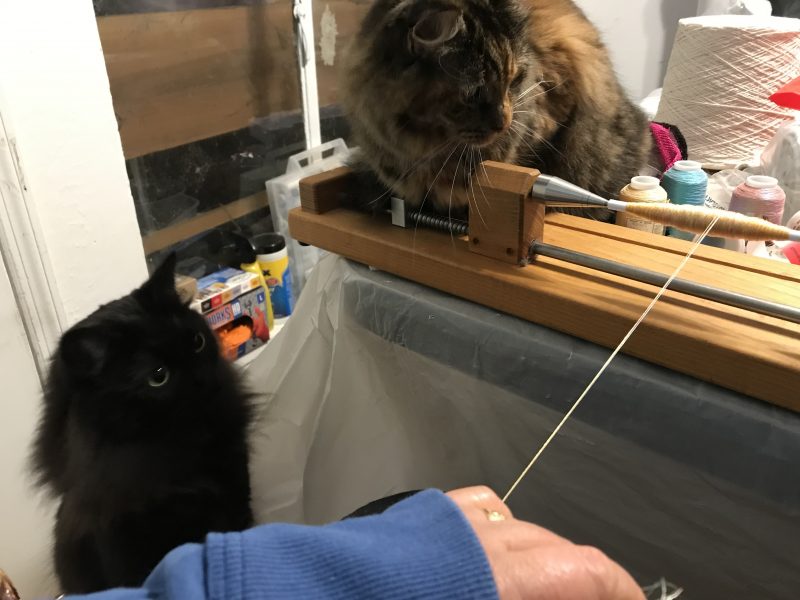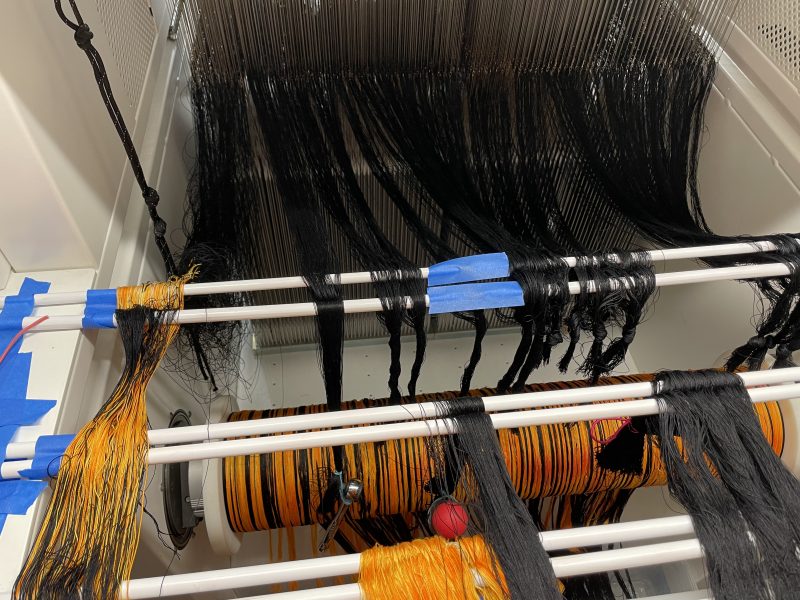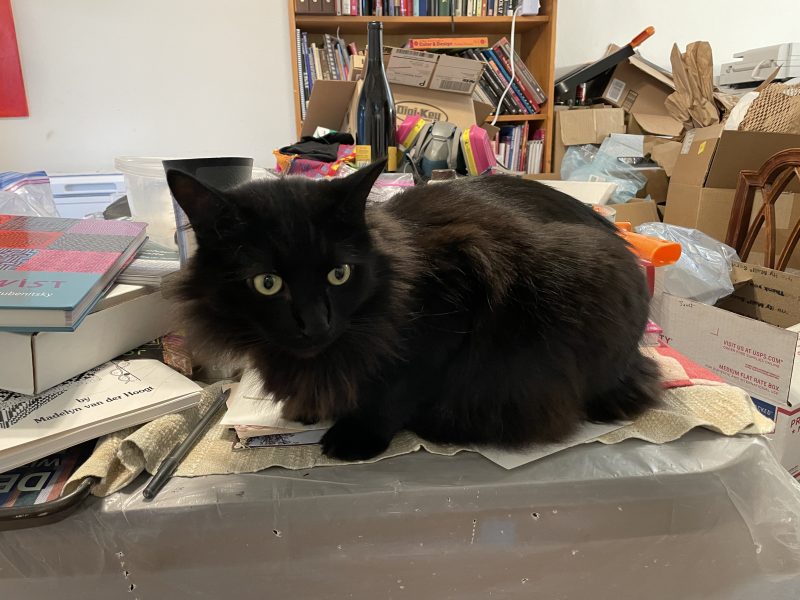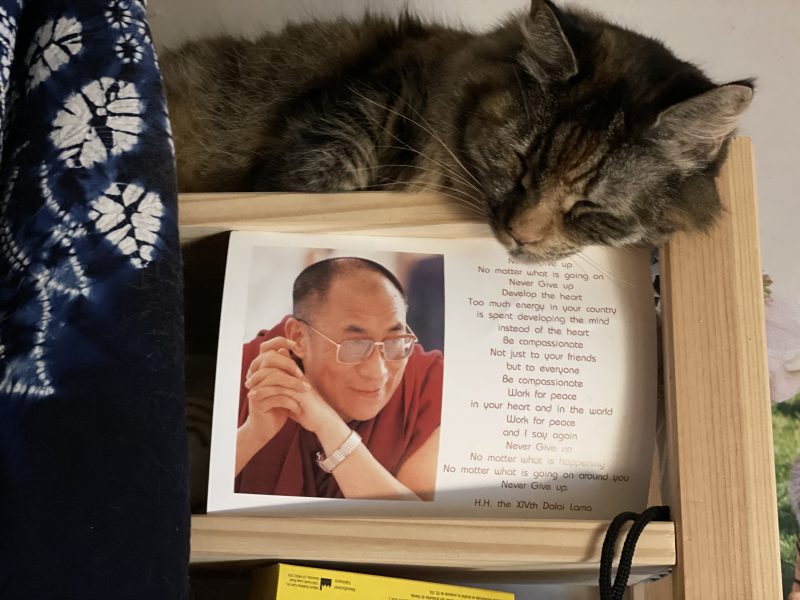Today is a day of celebration! Huge congratulations to Tigress and Fritz, who exactly eight years ago came home from their first successful hunt. And what a hunt it was! They “bagged” not just one, but TWO humans to adore, worship, and serve them for the rest of their lives.
Here are the mighty hunters the evening they arrived:
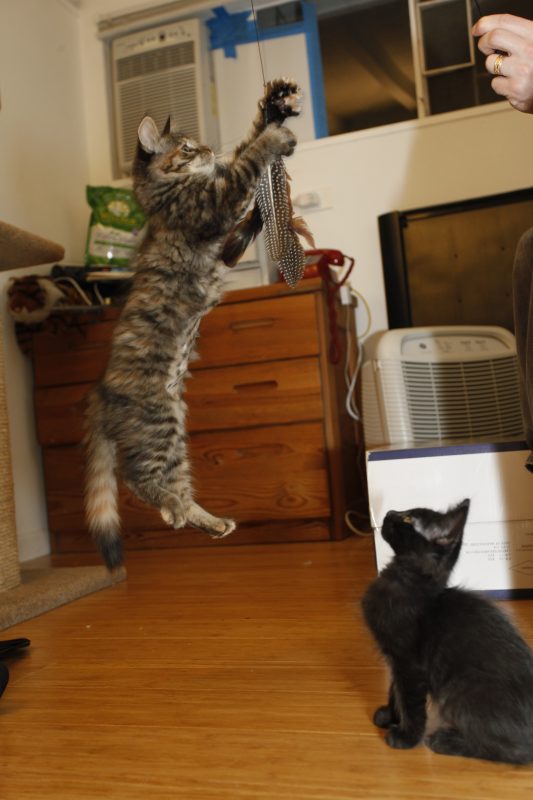
And here they are a few days ago, snuggled up together:
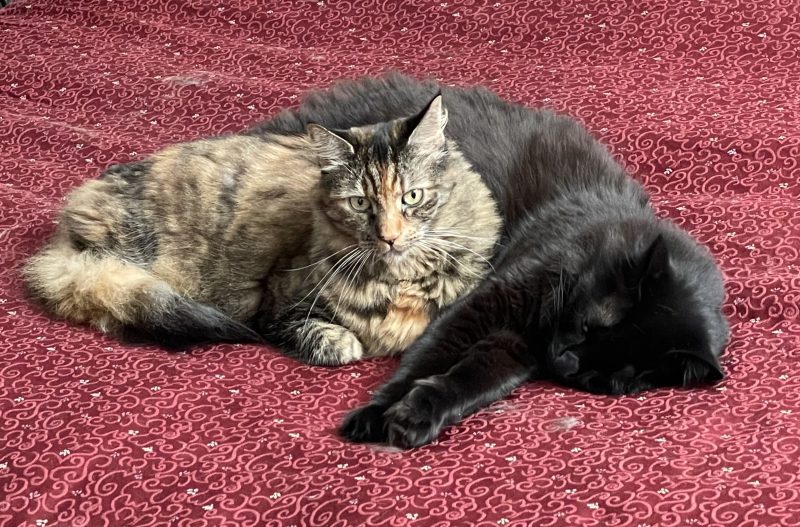
Fritz still loves his belly rubs:
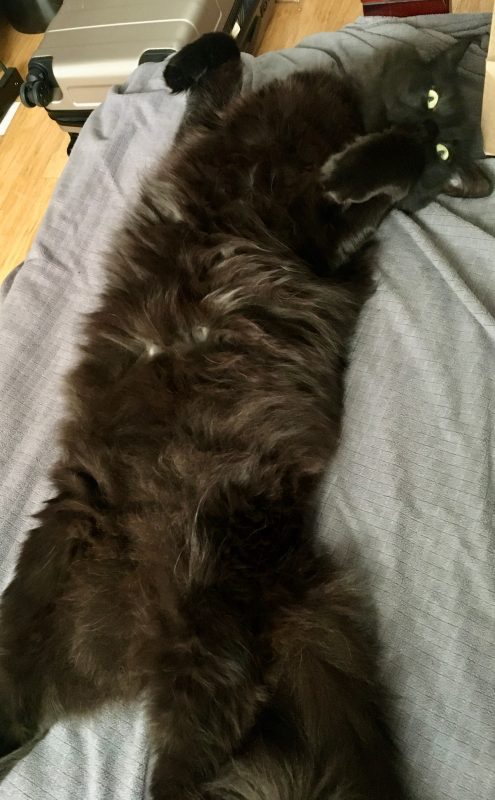
And Tigress still likes to sleep at the top of shelves. (It’s nice to have friends in high places!)
She’s very Zen, so perhaps she’s engaged in sectarian dialogue with HH the Dalai Lama while she naps?
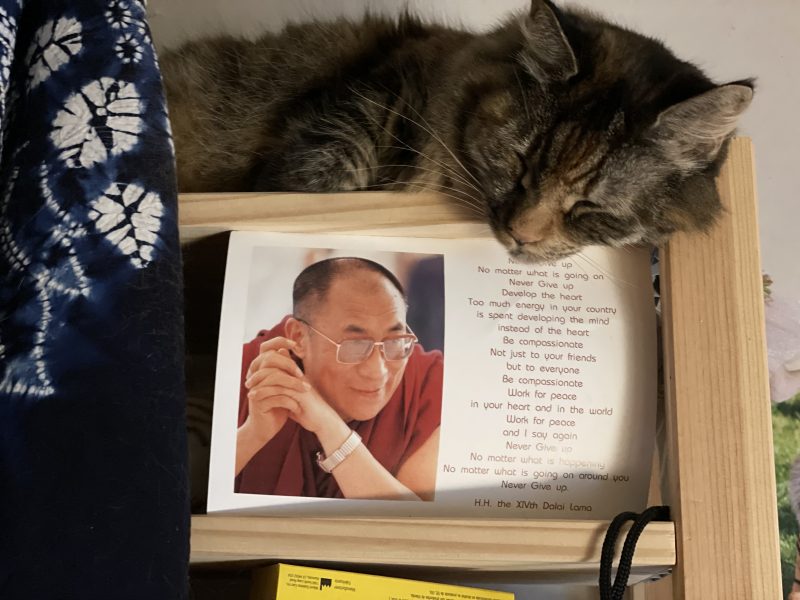
As a spiritual master, Tigress would be the first to tell you that if you love something, you must let it go free. If you don’t, how could you chase and kill it again???
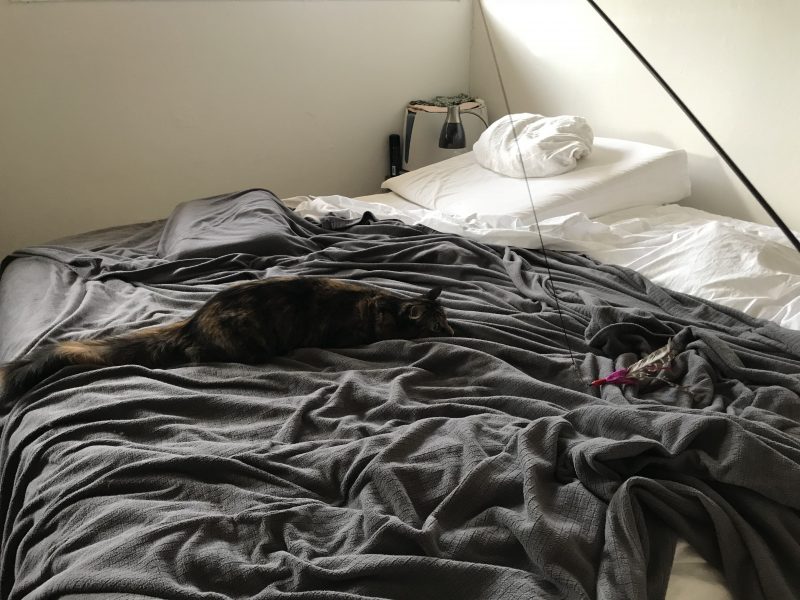
Yes, it’s been eight wonderful years. Eight years of being sat on, meowed at, mercilessly ordered to hand out the cat treats, and subjected to arbitrary demands from a tyrannical and utterly marvelous pair of cats. Here’s to many more years of “supervision” from our wonderful cats, Fritz and Tigress!
